
Current Physical Medicine and Rehabilitation Reports
Scope & Guideline
Shaping Tomorrow’s Practices in Rehabilitation Medicine
Introduction
Aims and Scopes
- Multidisciplinary Rehabilitation Approaches:
The journal emphasizes a multidisciplinary approach to rehabilitation, incorporating insights from physical therapy, occupational therapy, sports medicine, and rehabilitation psychology. - Evidence-Based Practice:
A core focus of the journal is on evidence-based management strategies and interventions, ensuring that practitioners are equipped with the most current and applicable research findings. - Patient-Centered Care:
The journal promotes research centered on patient experiences, outcomes, and quality of life, particularly in populations with chronic conditions, disabilities, and those recovering from injuries. - Innovative Therapeutic Techniques:
Current Physical Medicine and Rehabilitation Reports highlights innovative therapeutic techniques and technologies, such as neuromuscular electrical stimulation, virtual reality rehabilitation, and integrative therapies. - Sports and Exercise Rehabilitation:
The journal covers a wide range of topics related to sports medicine, including injury prevention, management, and rehabilitation protocols tailored for athletes. - Rehabilitation in Special Populations:
Research focusing on rehabilitation strategies for specific populations, including cancer survivors, individuals with neurologic conditions, and geriatric patients, is a significant component of the journal.
Trending and Emerging
- Neurorehabilitation and Cognitive Recovery:
There is an emerging focus on neurorehabilitation, particularly regarding cognitive recovery post-injury, indicating a recognition of the interplay between physical and cognitive rehabilitation. - Integration of Technology in Rehabilitation:
The incorporation of technology, such as virtual reality and telehealth, in rehabilitation practices is on the rise, reflecting a trend towards enhancing patient engagement and accessibility. - Multimodal Approaches to Pain Management:
Recent publications emphasize multimodal approaches to pain management, integrating pharmacological and non-pharmacological therapies tailored to individual patient needs. - Rehabilitation for Cancer Survivors:
An increasing number of studies are dedicated to rehabilitation specifically for cancer survivors, addressing the unique challenges and recovery pathways that this population faces. - Focus on Mental Health in Rehabilitation:
The integration of mental health considerations into rehabilitation practices is gaining prominence, recognizing the importance of psychological well-being in recovery outcomes. - Research on E-sports Injuries:
With the rise of e-sports, studies focusing on injuries and rehabilitation strategies for gamers are emerging, indicating a shift in the scope of sports medicine.
Declining or Waning
- Traditional Surgical Interventions:
There has been a noticeable decrease in publications focused solely on traditional surgical interventions, as the field increasingly emphasizes minimally invasive and non-surgical approaches. - Generalized Pain Management Techniques:
Research articles focusing on generalized pain management techniques without specific context or innovative approaches are becoming less prevalent, indicating a shift towards more targeted and evidence-based treatments. - Basic Rehabilitation Protocols:
The publication of basic rehabilitation protocols without substantial evidence or novel insights appears to be declining, as the journal seeks to prioritize comprehensive, evidence-based advancements. - Non-Evidence-Based Theories:
There is a waning interest in non-evidence-based theoretical frameworks in rehabilitation, suggesting a stronger adherence to rigorous scientific validation in published works. - Overviews of Historical Practices:
Historical overviews of rehabilitation practices that lack current relevance or application are being phased out in favor of contemporary, applicable research.
Similar Journals

Turkish Journal of Physiotherapy Rehabilitation-Turk Fizyoterapi ve Rehabilitasyon Dergisi
Exploring the frontiers of rehabilitation science.The Turkish Journal of Physiotherapy Rehabilitation (Turk Fizyoterapi ve Rehabilitasyon Dergisi), published by the TURKEY ASSOC PHYSIOTHERAPISTS, stands as a significant platform for the dissemination of research and developments in the fields of physiotherapy, rehabilitation, orthopedics, and sports medicine. Since its inception in 2018, the journal has been dedicated to advancing the understanding and practice of rehabilitation therapies, contributing valuable insights to both clinicians and researchers alike. Currently classified in the Q4 category across various relevant fields, including Orthopedics, Sports Medicine, and Physical Therapy, it reflects the evolving landscape of rehabilitation science. Although the journal is indexed in Scopus with ranks indicating its nascent stage, it serves as an essential resource for the academic community in Turkey and beyond. Researchers and professionals interested in innovative rehabilitation practices and advancements are encouraged to utilize this open access journal to share knowledge, fostering collaboration and growth within this critical area of healthcare.
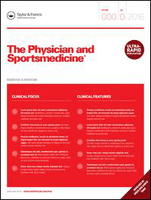
PHYSICIAN AND SPORTSMEDICINE
Empowering Healthcare Professionals in Sports MedicinePhysician and Sportsmedicine is a distinguished journal published by Taylor & Francis Ltd, specializing in the fields of orthopedics, sports medicine, physical therapy, and rehabilitation. With an E-ISSN of 2326-3660, this journal has been a vital resource for healthcare professionals and researchers since its inception in 1978, fostering an interdisciplinary understanding of sports-related injuries and treatments. Recognized for its impactful contributions, it currently holds a Q2 ranking in Orthopedics and Sports Medicine, a Q1 ranking in Physical Therapy, Sports Therapy, and Rehabilitation, and a Q2 ranking in Sports Science. The journal also boasts impressive Scopus rankings, including a rank of #45 in Physical Therapy and a rank of #71 in Orthopedics. With a commitment to disseminating cutting-edge research and clinical applications, Physician and Sportsmedicine serves as an essential platform for advancing knowledge and practice within these critical health domains. Subscribers and readers can expect comprehensive studies, insightful reviews, and a variety of articles that are crucial for keeping up with the latest trends and methodologies in sports-related health and rehabilitation.

Journal of Pediatric Rehabilitation Medicine
Unlocking Potential: Pioneering Pediatric Rehabilitation InsightsJournal of Pediatric Rehabilitation Medicine is a leading academic platform published by IOS PRESS, dedicated to advancing knowledge in the fields of pediatrics, rehabilitation, and physical therapy. With an ISSN of 1874-5393 and an E-ISSN of 1875-8894, this journal has carved a niche within the biomedical community, focusing on therapeutic innovations and evidence-based practices in pediatric rehabilitation. Recognized for its scholarly contributions, it holds a prestigious Q3 ranking in Pediatrics and Q2 rankings in both Physical Therapy and Rehabilitation categories, indicating its impact and relevance in the respective fields. Operating out of the Netherlands, the journal provides a comprehensive open access model that ensures that research is easily accessible to professionals, students, and researchers alike. With converged years spanning from 2007 to 2024, the journal continues to be an essential resource for those dedicated to enhancing the quality of life for children with disabilities and rehabilitation needs, fostering collaboration between clinicians and researchers through high-quality research dissemination.
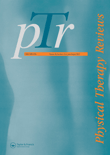
Physical Therapy Reviews
Advancing knowledge in physical therapy and rehabilitation.Physical Therapy Reviews is a distinguished journal published by Taylor & Francis Ltd that serves as a vital resource for researchers, clinicians, and students within the fields of physical therapy, rehabilitation, and sports medicine. With an ISSN of 1083-3196 and an E-ISSN of 1743-288X, this journal has earned its place in the academic community, categorized in the 2023 Q3 quartiles for Orthopedics and Sports Medicine, Physical Therapy, Sports Therapy and Rehabilitation, and Rehabilitation. Although it is not an open-access journal, the research published within its pages contributes significantly to the understanding and advancement of therapeutic practices and interventions. Covering a spectrum of topics from evidence-based clinical practices to rehabilitation techniques, Physical Therapy Reviews aims to enhance knowledge and foster innovation, making it an essential tool for anyone engaged in the health professions and rehabilitation sectors. The journal's continued commitment to high-quality scholarship ensures that it remains a relevant and impactful publication through its converged years from 1996 to 2024.
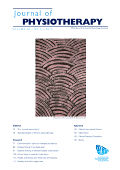
Journal of Physiotherapy
Advancing Physiotherapy Through Innovative ResearchThe Journal of Physiotherapy, published by the Australian Physiotherapy Association, is a leading peer-reviewed journal dedicated to advancing the field of physical therapy, sports therapy, and rehabilitation. With a stellar impact factor and ranked Q1 in the 2023 category of Physical Therapy, this journal serves as an essential resource for researchers, clinicians, and educators alike. Located in Australia, it features open access options that allow global dissemination of knowledge, enhancing the visibility of cutting-edge research from 2010 to 2024. With a commendable Scopus Rank of #5 out of 247 in its field, achieving the 98th percentile, the Journal of Physiotherapy is committed to enriching the evidence base within the profession and promoting best practices in physiotherapy. Whether you are searching for the latest clinical studies, innovative treatments, or comprehensive reviews, this journal provides a platform for high-quality scholarship that drives the profession forward.
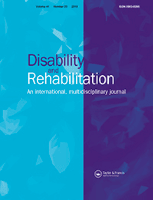
DISABILITY AND REHABILITATION
Advancing Knowledge to Enhance Disability Solutions.Disability and Rehabilitation, a prestigious journal published by Taylor & Francis Ltd, plays a critical role in the field of rehabilitation science. Since its inception in 1978, this journal has been dedicated to presenting high-quality research focused on improving the lives of individuals with disabilities through innovative rehabilitation techniques and healthcare solutions. With an impressive Q1 ranking in the Rehabilitation category and a Scopus rank of #24 out of 161, the journal is recognized for its significant impact and rigorous scholarly contributions, boasting an 85th percentile performance among peers. Although it operates under a subscription model, the journal remains a vital resource for researchers, healthcare professionals, and students seeking the latest insights and developments in the realm of disability and rehabilitation. Covering a broad spectrum of topics, from clinical practices to theoretical advancements, Disability and Rehabilitation continues to shape the future of rehabilitation research and practice worldwide.
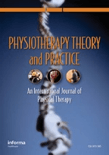
PHYSIOTHERAPY THEORY AND PRACTICE
Empowering Practitioners Through Evidence-Based InsightsPHYSIOTHERAPY THEORY AND PRACTICE is a leading journal within the realm of physical therapy, sports therapy, and rehabilitation, published by Taylor & Francis Inc. With an ISSN of 0959-3985 and an E-ISSN of 1532-5040, this esteemed journal focuses on the interdisciplinary approaches and clinical practices that advance the science and application of physiotherapy. Ranking in the top 33% of its category as indicated by its Q2 status in the 2023 category quartiles, it serves as an essential conduit for innovative research and evidence-based practices. The journal has been a vital resource since its inception in 1985, continuing to attract contributions that explore the latest developments in rehabilitation and therapy strategies. Although currently not an Open Access journal, PHYSIOTHERAPY THEORY AND PRACTICE remains pivotal in shaping the landscape of health professions, providing insightful articles that empower researchers, practitioners, and students to enhance patient care and treatment strategies in an evolving field.
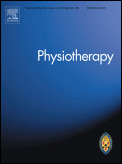
Physiotherapy
Shaping the Future of Physiotherapy PracticePhysiotherapy, published by Elsevier Science Ltd, stands as a prestigious journal in the field of Physical Therapy, Sports Therapy, and Rehabilitation. Since its inception in 1945, this journal has been committed to advancing the practice and science of physiotherapy through rigorous peer-reviewed research, making significant contributions to both clinical practice and academia. With an impressive Q1 ranking and a Scopus percentile of 88th, it is widely regarded as a leading source of evidence-based information for professionals and researchers alike. The journal operates without an Open Access option, which ensures that it maintains the quality and integrity of the research it publishes while providing exclusive access to valuable insights for its subscribers. By focusing on diverse topics within its scope, including therapeutic techniques, rehabilitation strategies, and sports medicine, Physiotherapy continues to shape the future of physiotherapy practice and education, making it an essential resource for anyone invested in this dynamic field.
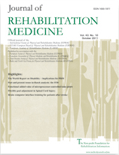
JOURNAL OF REHABILITATION MEDICINE
Transforming Rehabilitation Science for a Healthier TomorrowJOURNAL OF REHABILITATION MEDICINE, published by the FOUNDATION REHABILITATION INFORMATION in Sweden, stands as a leading platform for the dissemination of groundbreaking research in the field of rehabilitation. With an impact factor that places it in the Q1 category for Physical Therapy and Rehabilitation and a noteworthy Q2 ranking in Sports Science and Medicine (miscellaneous), this journal serves as an essential resource for researchers, clinicians, and students dedicated to improving patient care and rehabilitation outcomes. As an Open Access publication since 2001, it ensures that knowledge is widely accessible, promoting collaborative efforts across the global rehabilitation community. Aiming to bridge the gap between research and clinical practice, the journal covers a comprehensive range of topics, providing a vital forum for innovative studies that advance the understanding and effectiveness of rehabilitation therapies. As it approaches its convergence into 2024, the JOURNAL OF REHABILITATION MEDICINE continues to be a cornerstone for all those committed to advancing rehabilitation sciences.

European Journal of Physical and Rehabilitation Medicine
Connecting Communities: Global Insights in Physical and Rehabilitation MedicineWelcome to the European Journal of Physical and Rehabilitation Medicine, the premier peer-reviewed journal focusing on advancements in the fields of physical therapy, sports therapy, and rehabilitation. Published by EDIZIONI MINERVA MEDICA, this journal has established itself as a leading resource since its inception in 2008, now enjoying an impressive Q1 ranking in these disciplines according to 2023 metrics. With an emphasis on rigorous research and innovative clinical practice, the journal facilitates the dissemination of high-quality, evidence-based studies, contributing to the enhancement of patient care and therapeutic strategies. As an Open Access platform since 2022, the journal widens its reach, enabling researchers, clinicians, and students across the globe to access valuable insights without barriers. Residing in Italy, the journal's focus transcends regional confines, engaging a vibrant international community aimed at improving rehabilitation outcomes. Join us in exploring the latest developments that shape the future of rehabilitation sciences.